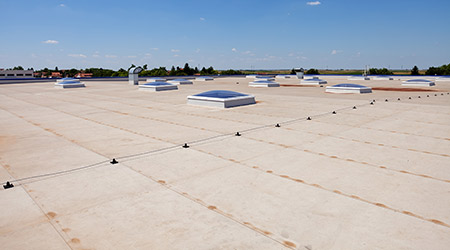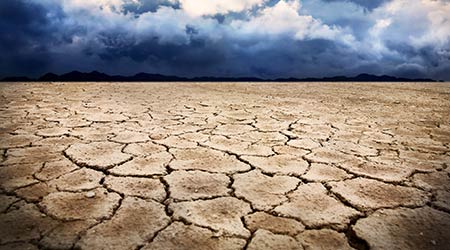
4 Steps For Preventing A Roof Collapse
March 16, 2016
If there’s one thing that’s guaranteed to ruin your day – and possibly your career – it’s a roof collapse. A collapse can shut your business down for weeks or months, and there’s a very real danger of injury or death for your employees and customers. Preventing a roof collapse is much easier – and much more economical – than dealing with the aftermath. And it needs to start while your roof is in good health, not when you start seeing signs of an imminent collapse.
Here are a few things you can do to keep your roof where it belongs:
1. Avoid Load Creep. Just as many projects gradually increase in scope, so can the load on your rooftop. Maybe you needed a bigger AC unit. Maybe you finally convinced the building owner to purchase walkways to protect the roof from foot traffic. Or maybe spring-like weather has a bunch of employees using the rooftop as a lunch hangout. It’s critical to remember that the engineers and architects who designed your roof designed it with very specific load-bearing capabilities. [http://www.phpsd.com/blog/5-must-have-factors-in-your-roof-load-calculations] Any changes to the load throw those calculations off and make a collapse more likely. Always check with an engineer before adding anything to your roof or allowing general access.
2. Manage Snow Accumulation. Accumulated snow can add considerably to a roof’s load and, every year, there are headlines about yet another roof that collapsed under the additional weight. Just recently, snow caused the collapse of the roof of a tire business in Kalkaska, Michigan. Although no one was injured, the building suffered enough damage that it may have to be demolished, which is an expense no building owner wants to take on. Sure, nobody wants to be up on a roof removing snow when it’s freezing cold and snow is blowing everywhere, but, unless your roof was specifically designed to handle a snow load, it’s important to get the snow off the roof as soon as possible, starting at the areas with the heaviest drifts or uneven accumulations.
Tip: When removing snow, don’t get rid of all the snow on your rooftop. If you do, you could end up causing more harm than good. The key is to stop when you’re within 2-3 inches from the roof surface.
3. Keep Drains Clear. While snow gets more attention, rain can also contribute to a roof collapse. What typically happens is that, during a heavy rain, water ponds in low spots on the roof. The weight of the water causes that part of the roof to deflect even more – and that leads to even more water ponding. And, if ponding water doesn’t directly lead to a roof collapse due to weight overload, it can cause deterioration, which increases the likelihood of significant structural damage. Clean and unobstructed drains are an essential part of preventing roof collapse. Clean your drains at regular intervals as well as after every storm, and make sure that drains are not covered by equipment, repairs, or anything else that could keep water from draining properly. And don’t forget that the bottom of the drain, where water exits, should also be clear of debris.
4. Maintain, Maintain, Maintain. Regular inspections and maintenance should be an inherent part of your roof management strategy. Timely inspections and repairs can catch problems before they lead to the kind of damage that can cause roof collapse. An overhanging tree branch, for example, can fall onto the roof and puncture the membrane. That, in turn, can allow water to seep in, eventually causing rot and weakening the roof. Makeshift pipe supports can collapse, allowing pipes to fall onto the roof and damage the surface. Routine inspection and maintenance – trimming that tree branch, for example, or using professionally engineered pipe supports and monitoring their condition – can prevent a lot of the problems that lead to roof collapse.
The costs of a roof collapse can be astronomical, both in dollars and in human terms. And don’t think it can’t happen to you or your building – approximately 3,000 roofs collapse [http://www.senteck.com/need/incidence.html] in the United States each year. Don’t be a statistic. Make preventing a roof collapse a day-to-day priority.
This quick read is from Art Valentz, founder of PHP Systems/Design, the original creators of the Zero Penetrations installation method of rooftop support systems.
Read more about what causes roofing problems.
Next
Read next on FacilitiesNet












